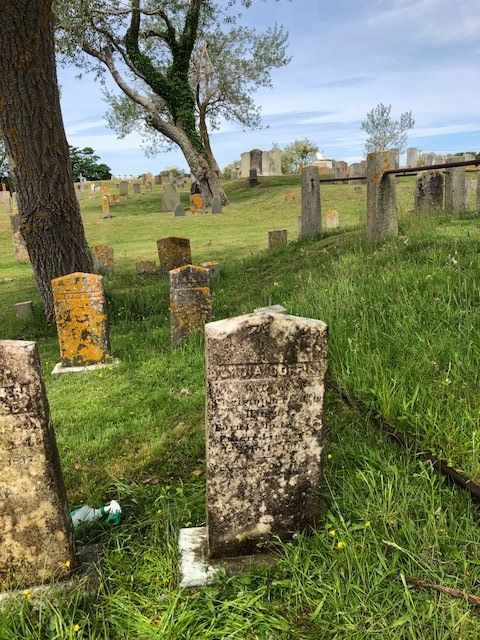Stone Monument Conservation
On Saturday, June 10, the MMA in conjunction with the Prospect Hill Cemetery, will offer our yearly stone monument conservation workshop. In 2022, we cleaned the stone of Lydia Coffin Hussey. (Seen in image after cleaning - but before the solution does its real magic.) Why? Because the MMA has in its collection a small wooden marker which was likely discarded and found at the dump. On it was a number and Lydia Coffin Hussey’s name written in pencil. Likely, this marker was placed at her burial site until a stone could be erected – in order to mark her gravesite though it’s in a larger family plot. With a little digging – in great part thanks Tuck’t In by Prospect Hill Cemetery historian, Paula Lundy Levy – we were able to glean some basic details about her. She married the Reverend Christopher Coffin Hussey – yes, Coffin was in both their names, small island – and they had three daughters – two of whom are buried in the lot. One died at age 16; the other at age forty-four – she may have married or been single. If she was married and died before her husband, burying her in her family’s plot makes sense. (Sally Mitchell Barney – Maria Mitchell’s oldest sister – died before her husband. She was buried in the Mitchell family plot and her husband remarried. When he died, he was buried in his second wife’s family plot.)
Lydia’s husband, Christopher, while raised as a Quaker would later become an ordained Universalist minister with parishes off-island. He also was a collector of island stories and after his death, a book he was working on, was completed by Lydia and published in 1901. I believe Lydia may not have had a marker for a long time because she died before at least two – if not all three – of her children. That may have left her with no one to oversee a proper internment. In Tuck’t In there is mention that records show the stone was still not there in 2007 – but I believe the records are likely wrong as the stone is there. Last year, we cleaned it. This year we hope to clean the stones of her two daughters who are interred in the plot (at rear in image).
Please join us. Registration is necessary and available on the MMA website at: https://112458a.blackbaudhosting.com/112458a/Preserving-the-Monuments-of-Our-Ancestors-How-to-Properly-Clean-Historic-Gravestones
Note: We utilize a special cleaner made for stone monuments and a proper conservation process. One must be trained in such cleaning and in using the proper tools and cleaner. One must also have permission form the cemetery to clean a stone – even of one’s own family – and one must never clean stones without permission from family members or descendants. Of further note: in many places, gravestone rubbings are illegal – it destroys the stone.
JNLF
Recent Posts





